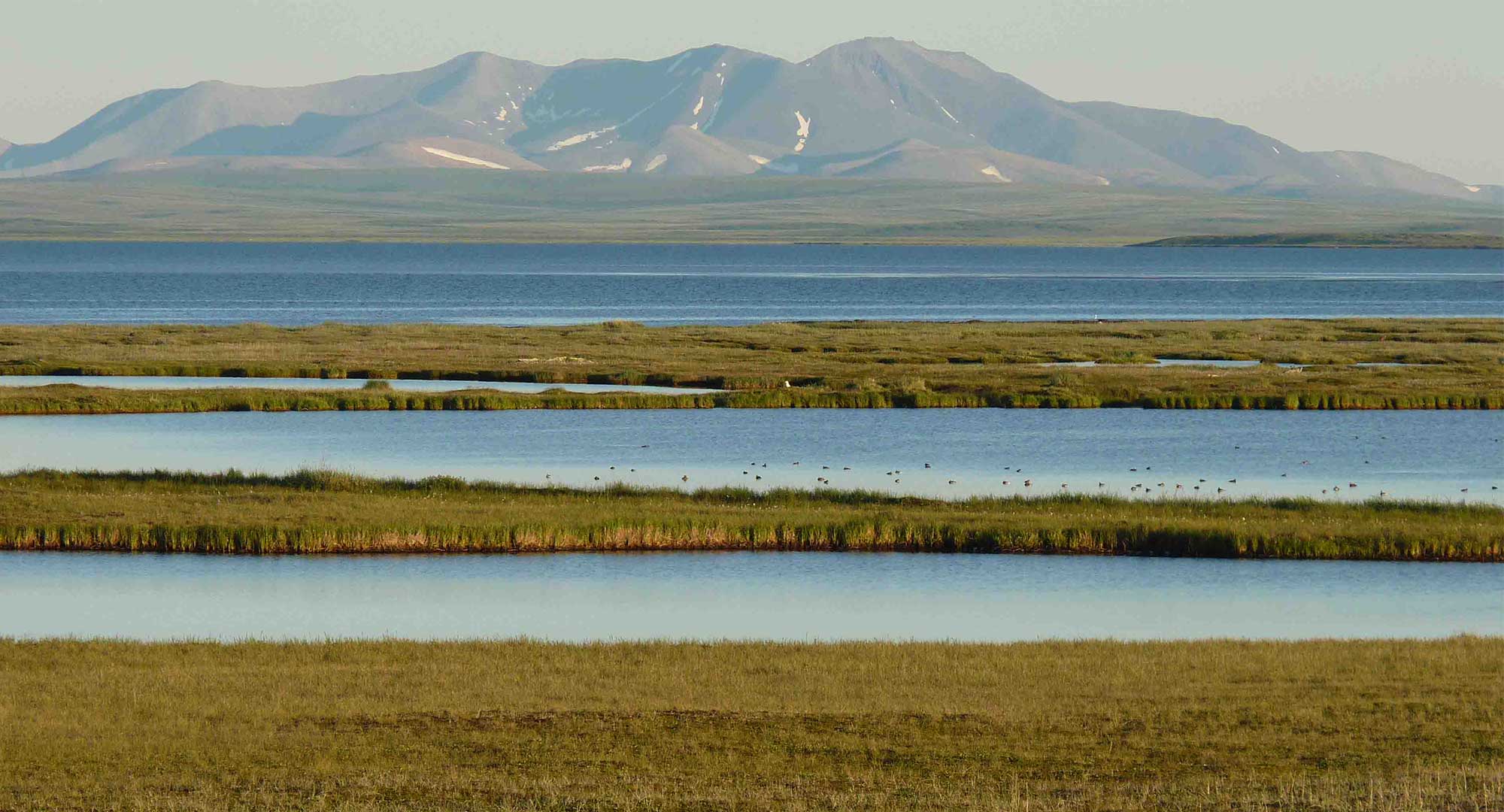
In this photo, Giant granite rocks rise from the surrounding rolling hills.
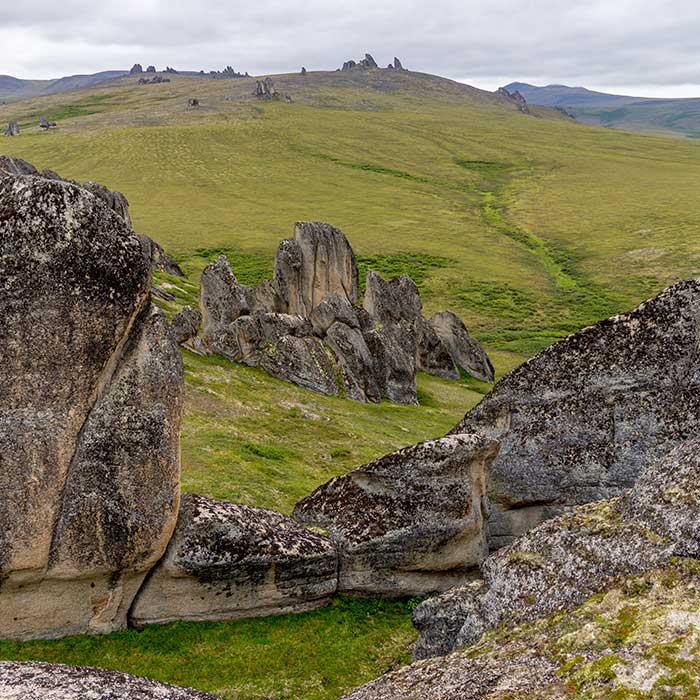
A meandering river flows along a vast grassy landscape.

Coastal wetlands against a mountainous backdrop.
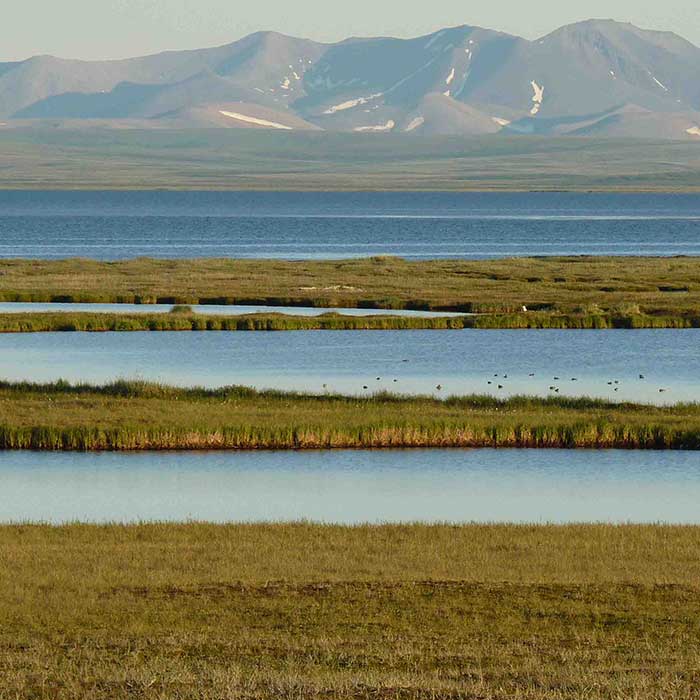
A lichen covered rock carin stands before a large lake.

Bering Land Bridge National Preserve lies at the heart of Beringia, an enormous Ice Age landmass that once connected Alaska and Siberia. Over 10,000 years ago, large ice sheets trapped enough water to drop sea levels and expose a grassy pathway where many migrations took place.
Ice-age animals, plants, and people lived on this grassy landmass and traveled between the Asian and North American continents. Bering Land Bridge National Preserve protects a piece of this historic gateway. Indigenous people have lived on the landscape since time immemorial. Though things are always changing, Inupiaq people continue to live and depend on the land as part of a subsistence lifestyle. Subsistence is the practice of hunting, fishing, and gathering plants and berries. It extends to include culture, traditional values, spirituality, and social customs.
If you traveled to Bering Land Bridge National Preserve, you would encounter a vast expanse of tundra, rolling hills, sandy beaches and winding streams. Its vibrant ecosystem is home to a rich variety of fish, birds, and mammals that are part of a special, diverse, and mystic landscape.
The following recordings from the Macaulay Library at the Cornell Lab of Ornithology were used: Arctic Fox - ML231283, Muskox - ML137344. The following images from the NPS Subsistence Photo Contest were used: Herbie’s Ghost by Nick Treinen, Trout Hanging on Fish Rack by Jonathan Komakhuk, Hunting Caribou at Bering Land Bridge by Lia Nydes, Bird Bounty by Elizabeth Korenek – Johnson, First Hunt by Jeanette Koelsch, Crane by Elizabeth Korenek – Johnson, Setting a Net at Cape Nome by Lia Nydes, Dad, Dog, Ducks by Kacey Miller.
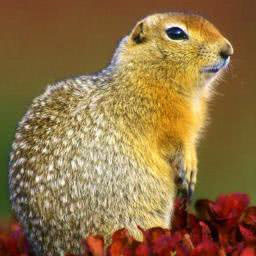
Arctic ground squirrels have pockets inside their cheeks! They use this extra space when gathering food or nesting material and bringing it back to their burrows.
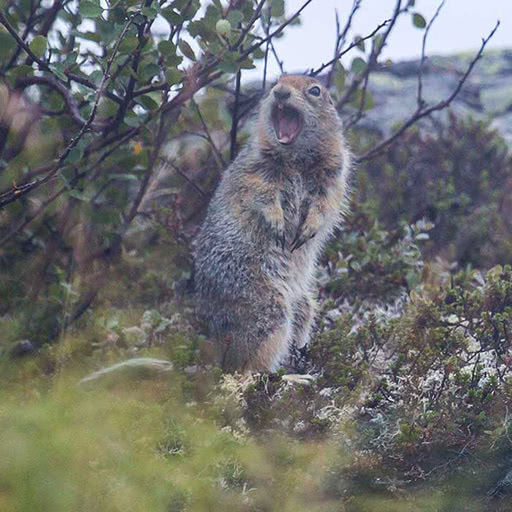
An arctic ground squirrel stands on its hind legs.
During hibernation, the body temperature of the Arctic ground squirrel drops below freezing! This is called supercooling. Every two to three weeks, it will shiver and shake for 12-15 hours to warm back up. Now that's super cool!
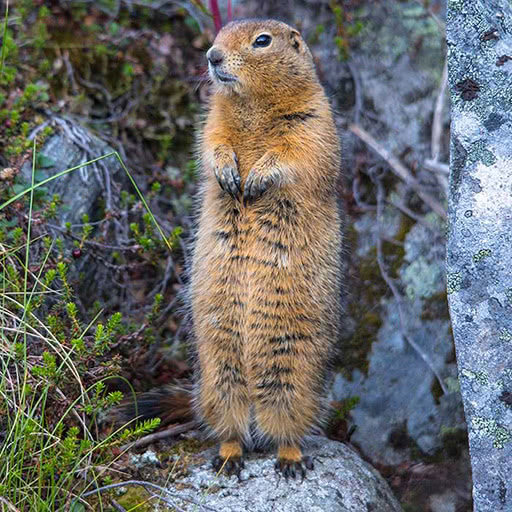
An arctic ground squirrel stands on its hind legs revealing its elongated body.
Arctic ground squirrels have strong claws and use them to dig elaborate burrows that are interconnected through a series of tunnels.
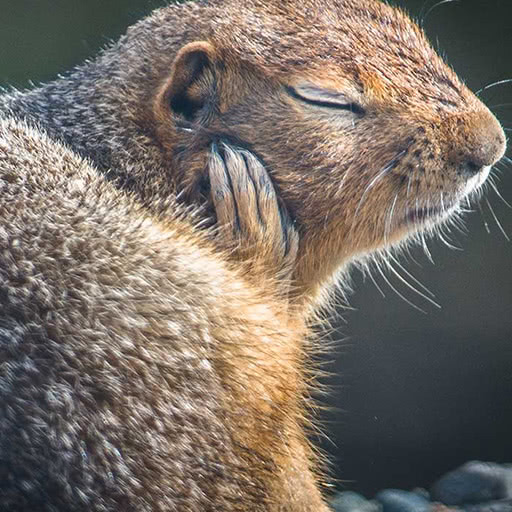
An arctic ground squirrel rests its head on its hand.
Arctic ground squirrels are not picky eaters. They will feast on plants, seeds, fruit, roots, mushrooms, and even freshly killed animals. During the short summer they work hard to store a lot of body fat in order to survive a hibernation that lasts nearly 2/3 of the year!
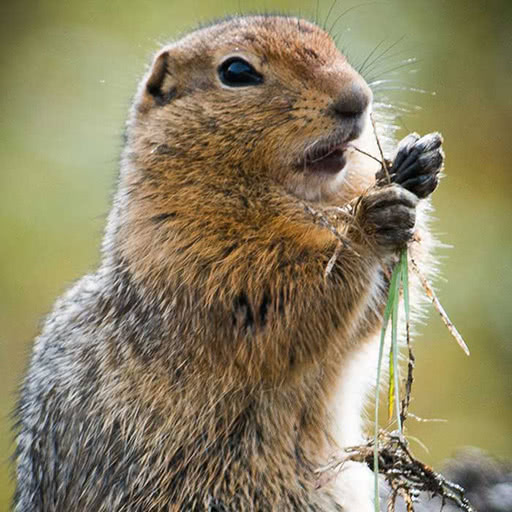
An arctic ground squirrel snacks on a few blades of grass.
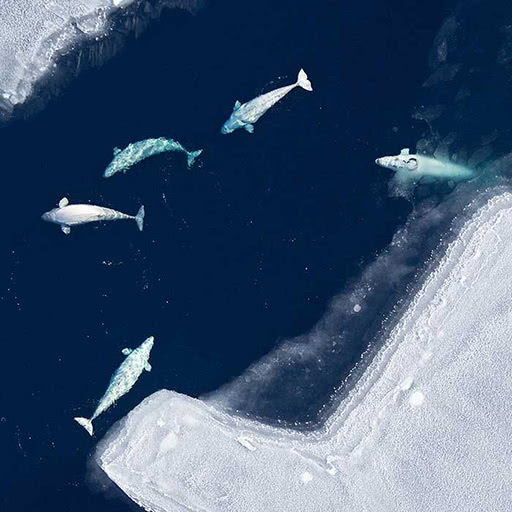
A beluga's white skin can blend in with floating sea ice. This camouflage helps protect the beluga from predators, such as orcas and polar bears.
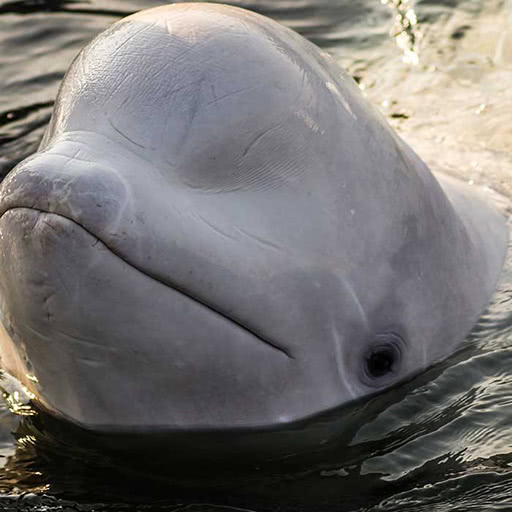
A beluga's bulbous head is called a melon, a key player in the beluga's ability to echolocate. Belugas can wiggle their melon to direct sound in a specific location.
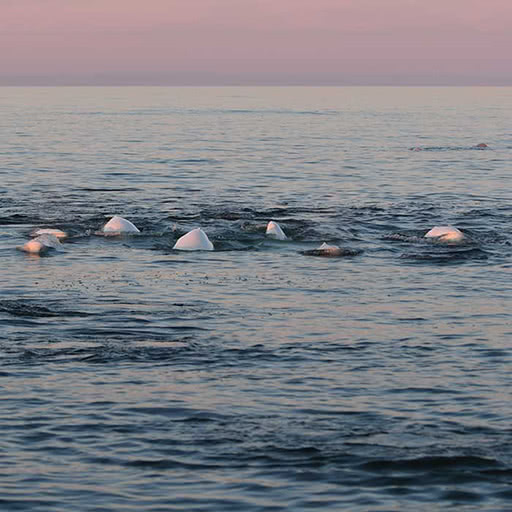
Belugas are toothed whales. They use their teeth for biting and tearing, rather than chewing like we do. What do they like to eat? Fish, squid, octopus, shrimp, crab, marine worms, and even zooplankton!
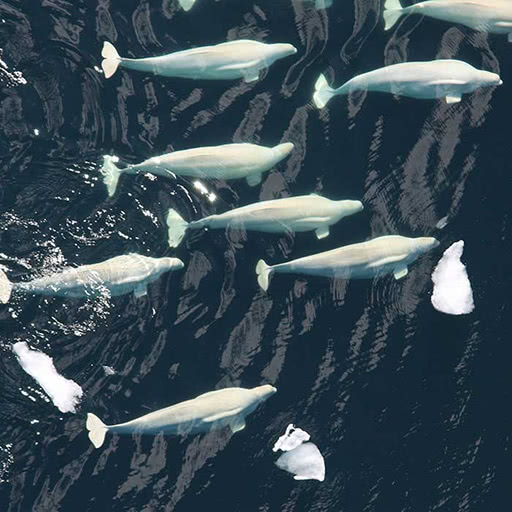
Belugas have a dorsal ridge instead of a dorsal fin. This ridge allows them to better maneuver the ice-covered ocean.
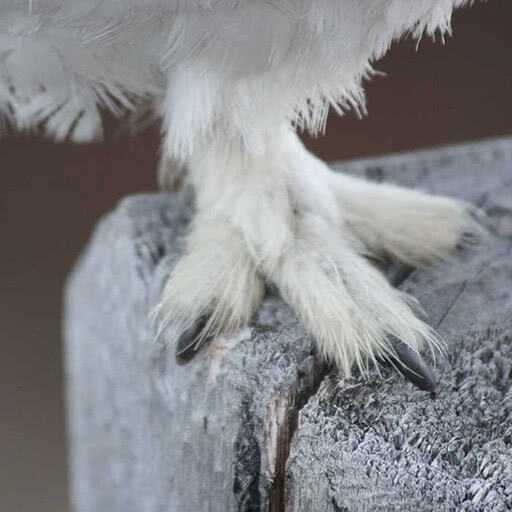
During the cold winter months, a ptarmigan’s feet are covered in feathers. It keeps their feet warm and doubles the foot's surface area, making it easier to walk on snow.
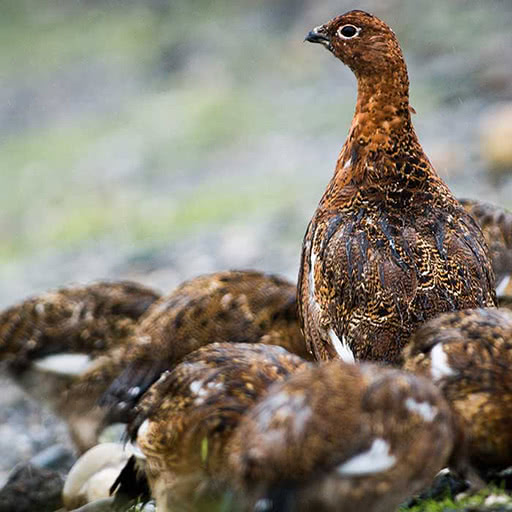
Very few bird species spend the entire year in the Arctic, ptarmigan are of the hearty few! They molt throughout the year and their feathers go from a brilliant white in the winter to a spotty brown in the spring, summer, and fall.
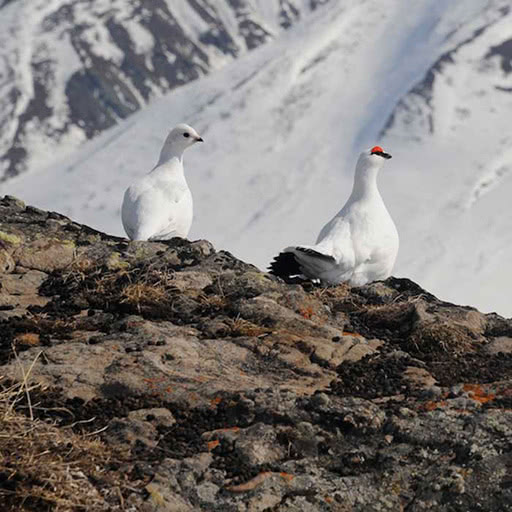
During the winter, ptarmigan survive on a dry diet of leaves and buds. How do they stay hydrated? By eating snow!
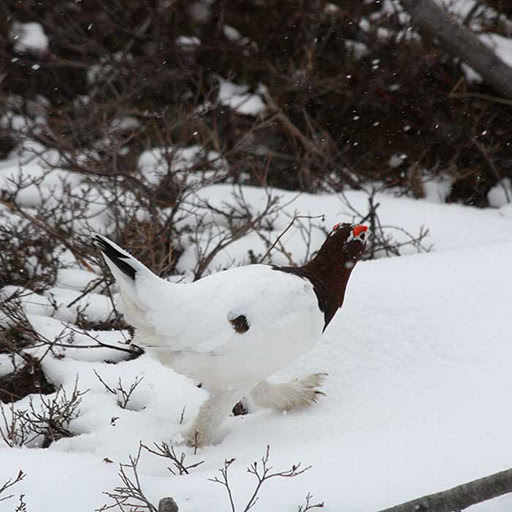
To survive the weather of winter, ptarmigan may create a snow burrow if the snow is deep and temperatures are low. On less extreme nights, they construct a small hole and nestle in with their body submerged and their head at snow level.
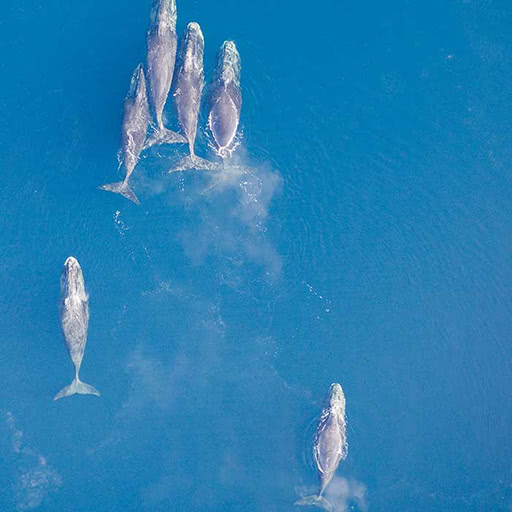
Much like our nostrils, bowhead whales have two blowholes on top of their head that allow the whale to breathe. During long arctic winters, they have been known to break sea ice up to 7 inches thick in order to surface and take a breath.
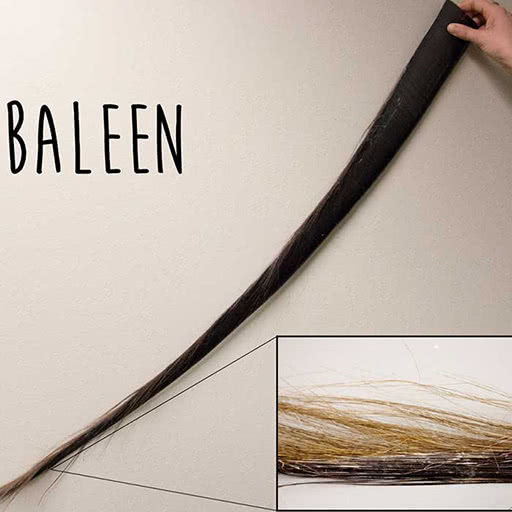
Baleen plates grow from the top of a bowhead whale's mouth. As they open their mouth, small organisms get trapped in the baleen bristles as water filters out. The bowhead whale pushes out the excess water and feeds on the plankton with one big gulp.
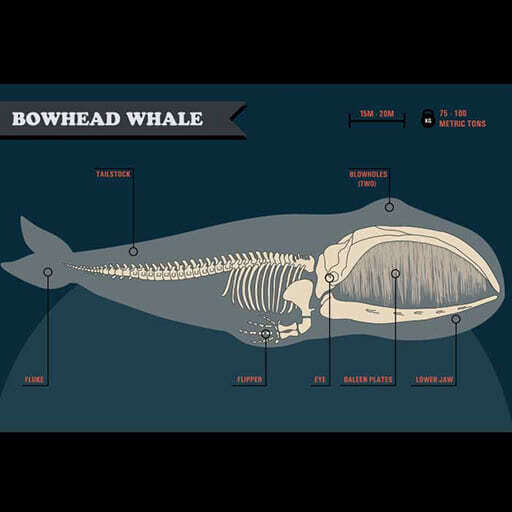
Bowhead whales have the thickest blubber of all whale species! It is up to 1.5 feet thick and helps the whales stay warm in icy waters.
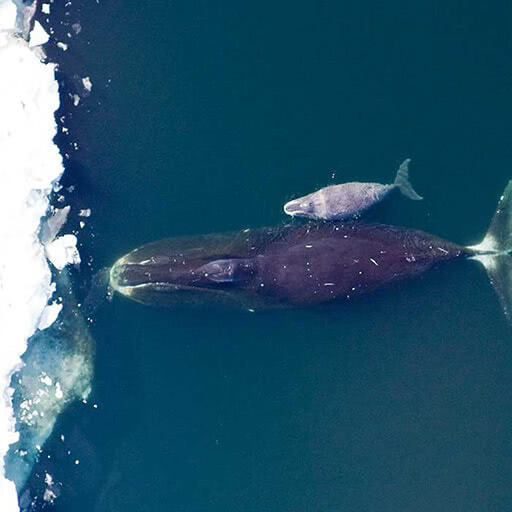
Blubber stores energy including proteins, fats and nutrients that help the whale survive when food is not readily available.
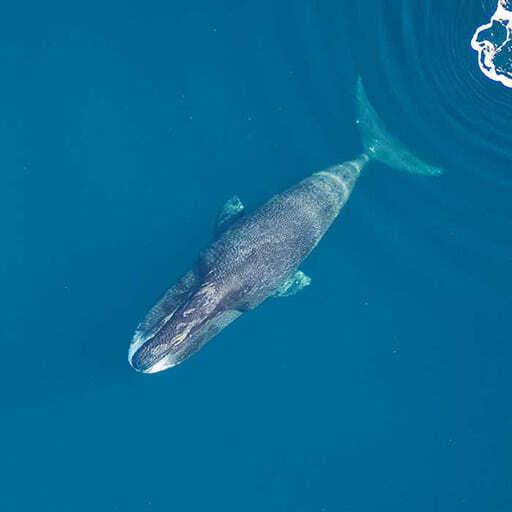
Bowhead whales live in Arctic and subarctic waters, including the Bering, Chukchi, and Beaufort Seas off the coast of Alaska. They follow the ice pack that extends and recedes with the seasons.
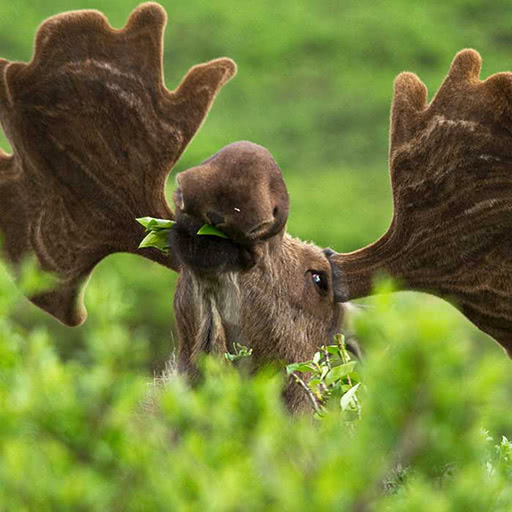
Moose have long legs that help them walk over terrain, such as the tundra and deep snow. They can also look over bushes and reach vegetation other animals can't get to. Did you know a moose can run at speeds of 35 miles per hour?
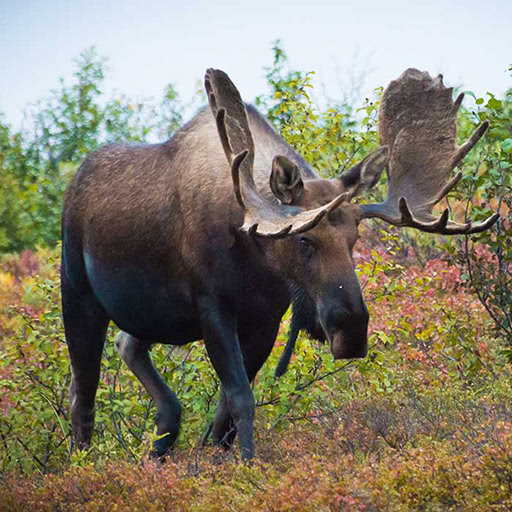
Antlers only grow on male moose. During breeding season they will rub and thrash against shrubbery to leave their scent and mark their presence, keeping other males away and hopefully attracting the female.
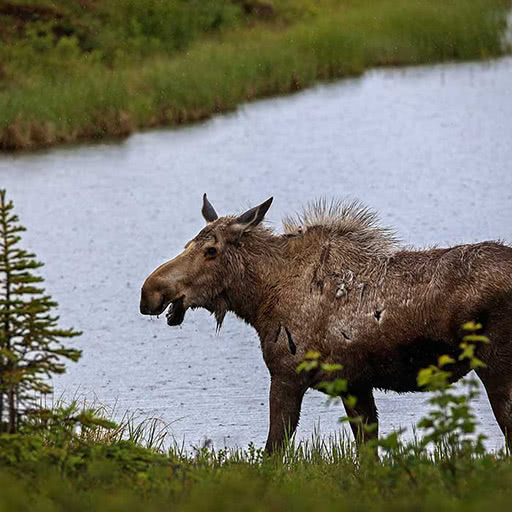
Moose have two types of fur: a short woolly fur that grows close to their skin and traps warm air, and a thick coat of hollow guard hair that is longer and protects them against wind and water.
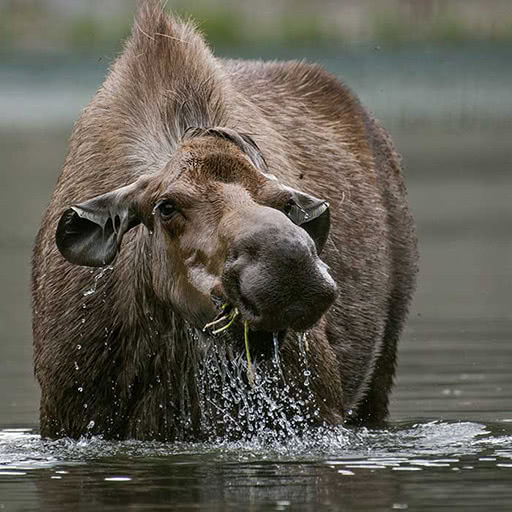
Their large hooves prevent them from sinking in the snow, help them dig for food, and act as paddles in the water.
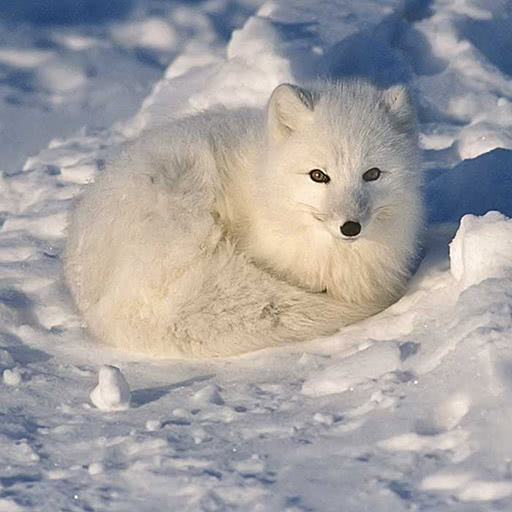
To take refuge from the harsh winter climate, the Arctic fox curls up and covers itself with its large bushy tail.
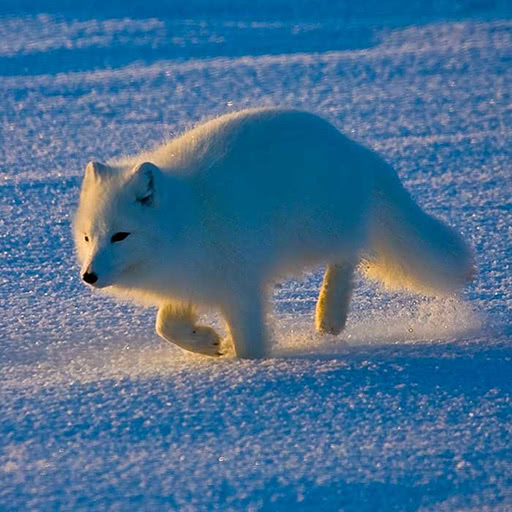
The Arctic fox's striking white fur protects it from the cold Arctic environment, where temperatures can average -18F in the winter. Their fur is considered one of the warmest furs.
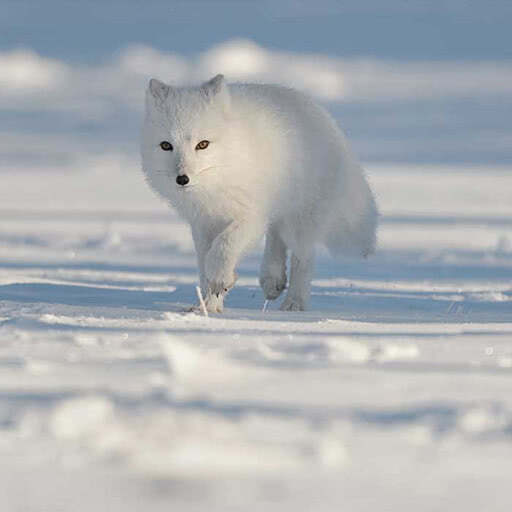
Arctic foxes are often found on the sea ice. This icy environment provides few places to hide. Their white fur allows them to blend in with their surroundings and not be seen by their predators, such as polar bear and orcas.

The Arctic fox will eat small mammals, sea bird eggs and carrion left by large predators. It is not uncommon to see an Arctic fox following a polar bear, hoping to feast on the leftovers of its last hunt.
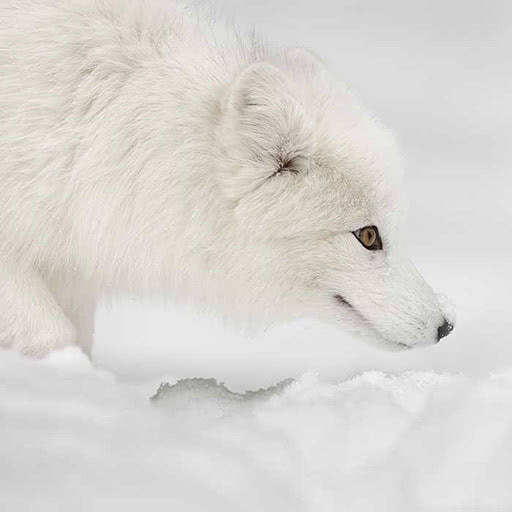
The Arctic fox’s sensitive hearing allows them to locate a lemming under 4-5 inches of snow. They are known for their hunting technique of diving into the snow head first to capture prey.
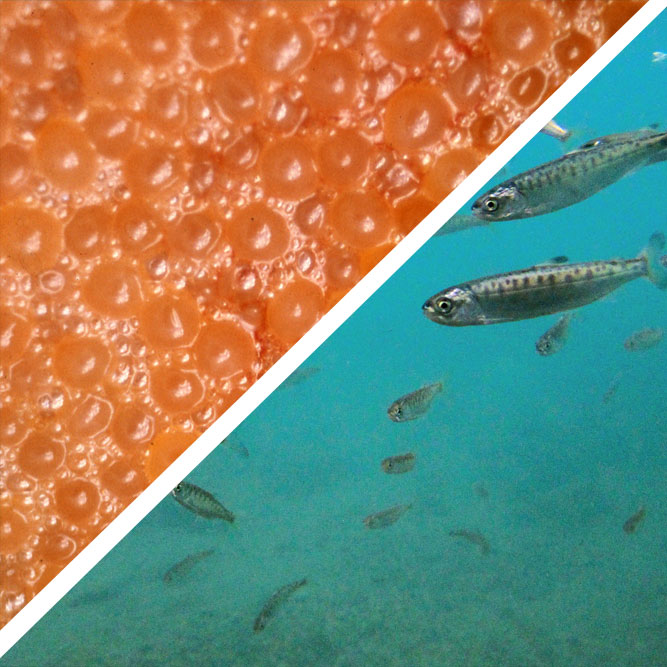
Salmon change a lot during their lives. They go from an egg, to an alevin, to a fry, to a fully-grown fish while swimming to their ocean home. After spending years in the ocean, they will return to the river where they were born to lay new eggs before they die.
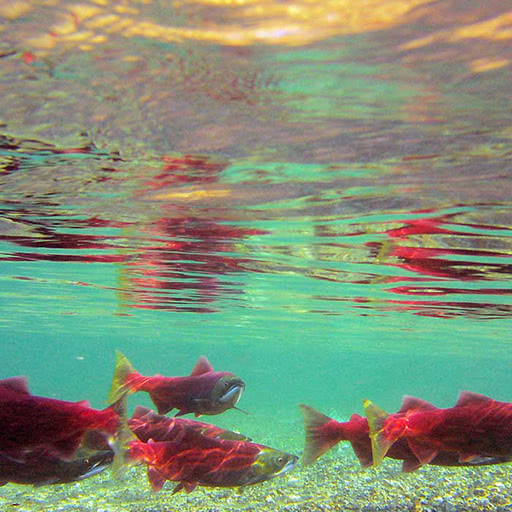
Before returning to the rivers to mate at the end of their lives, salmon undergo one final transformation. They transform from a brilliant silver to a light pink or vibrant red. These new flashy colors allow males to attract females.
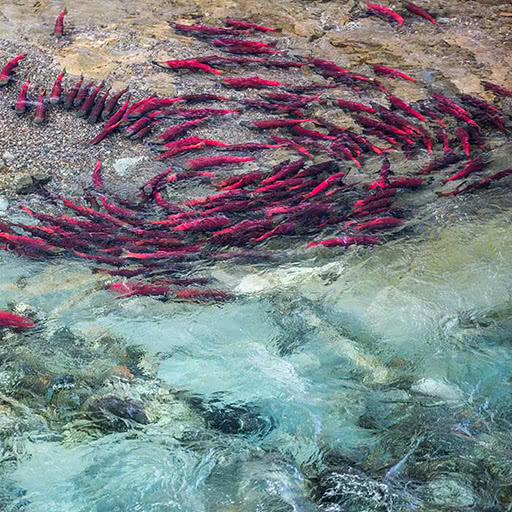
Salmon have the extraordinary ability to move between freshwater and saltwater. Before moving from saltwater to freshwater, they spend time at the river mouth where they get used to the changing salinity.

Salmon go through many physical transformations as they enter their spawning phase. One of the more prominent changes is the shape of their mouth. In most male species, the jaw elongates, the nose develops a downward hook, and sharp teeth emerge from their mouth.
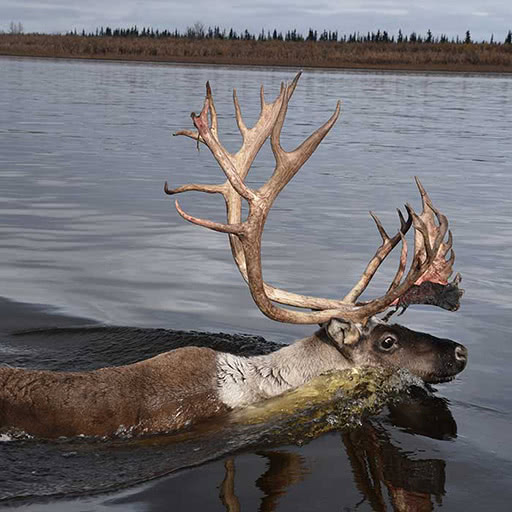
Caribou have concave split hooves, similar to moose. They spread widely to help the animal walk through snow and soft tundra and also serve as paddles when caribou are swimming.
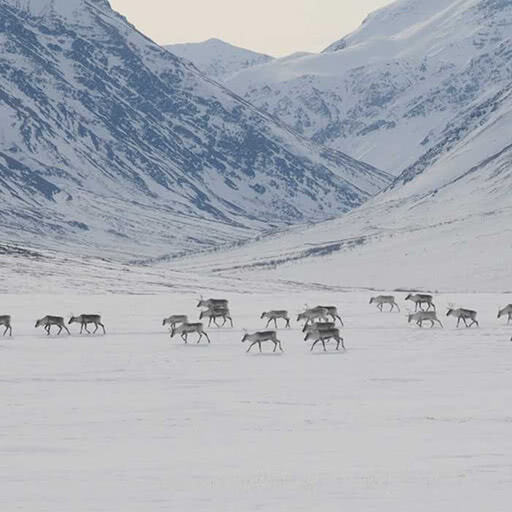
Caribou migrate between a winter range and a summer range throughout the year and can log up to 2000 miles per year! Bering Land Bridge is part of the winter range for the Western Arctic Caribou Herd.
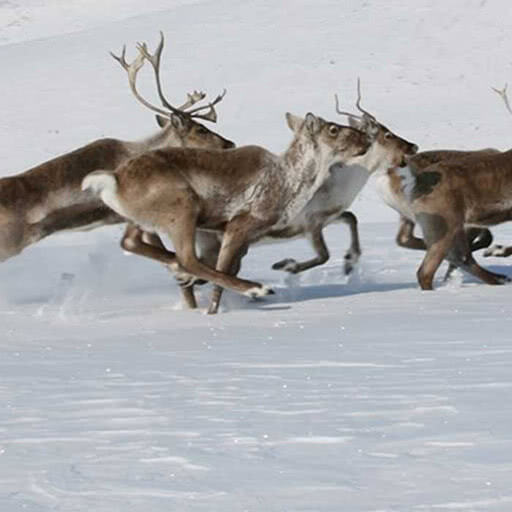
Caribou have hollow hair. The air trapped inside provides excellent thermal insulation, making them weatherproof in cold Arctic conditions.
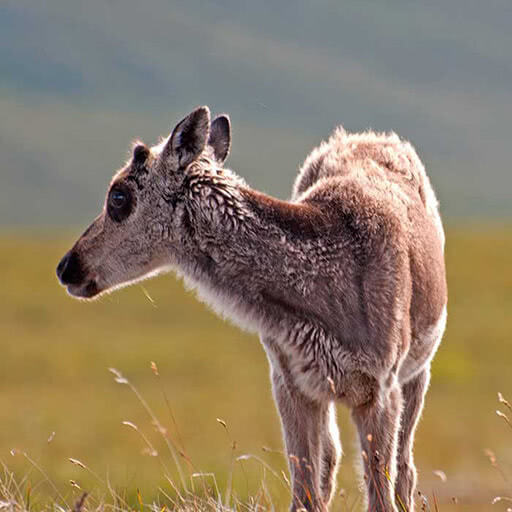
Both male and female caribou have antlers! Pregnant caribou will keep their antlers until after calves are born in spring as an added protection from predators, like wolves.
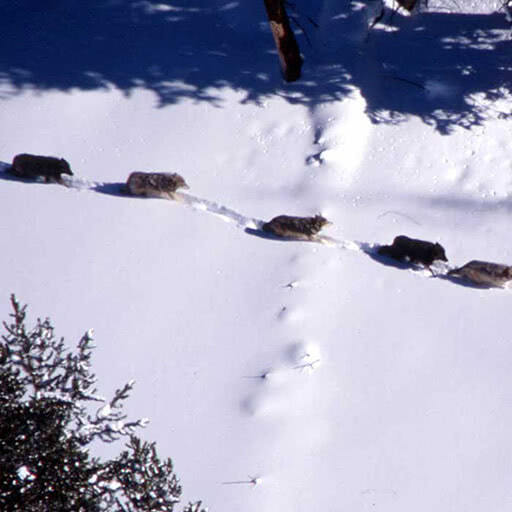
The gray wolf has it's own snow plow. Its narrow chest is used for moving through deep snow.
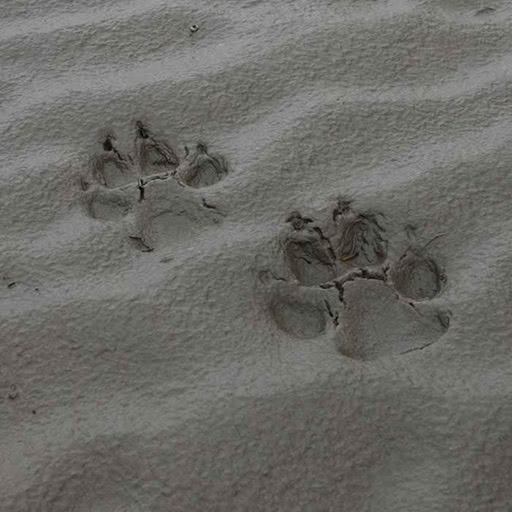
Their paws have a little bit of webbing between each toe, allowing them to move a lot easier in deeper snow. Think “specialized” not “duck-like”.
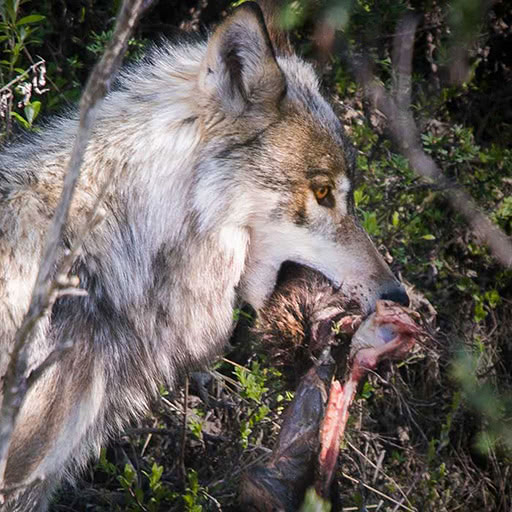
Wolves have extremely strong jaws. They can crush large bones in just a few bites.
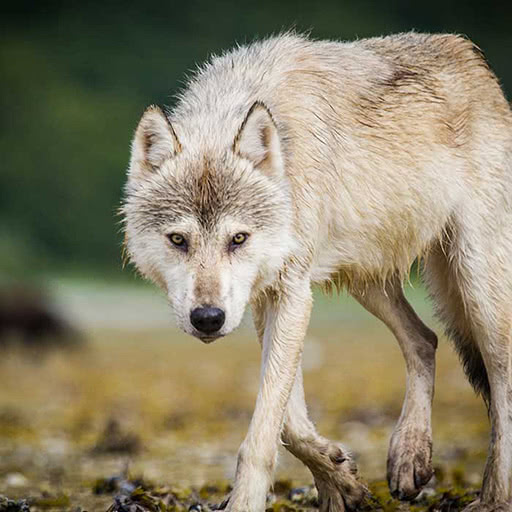
A wolf can carry 22 pounds of food in its stomach.
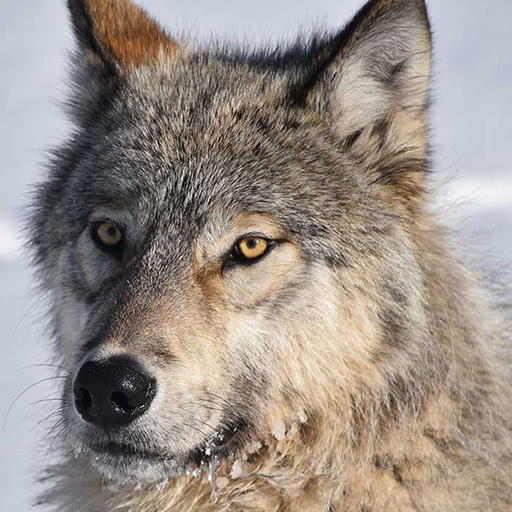
Gray wolves use howls to communicate between their pack mates, warn others of territory, or coordinate social activities.
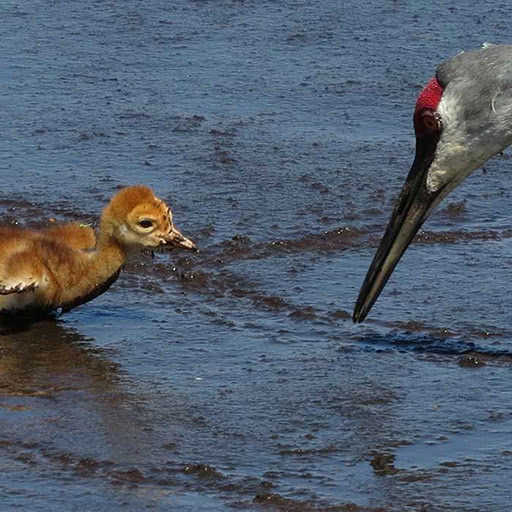
Every spring, a migratory population of sandhill cranes flock to areas like Bering Land Bridge National Preserve to breed.
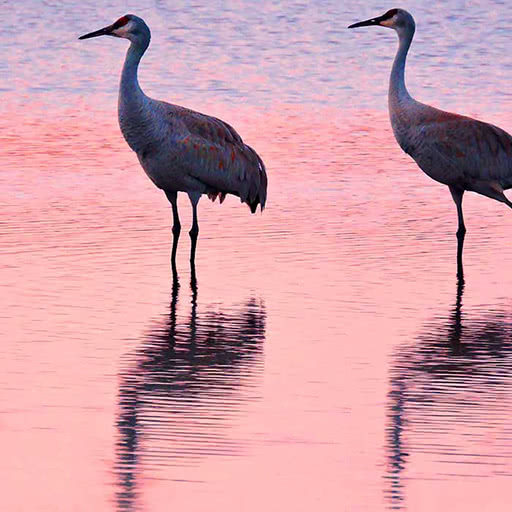
Sandhill cranes have long legs to keep their feathers out of the water.
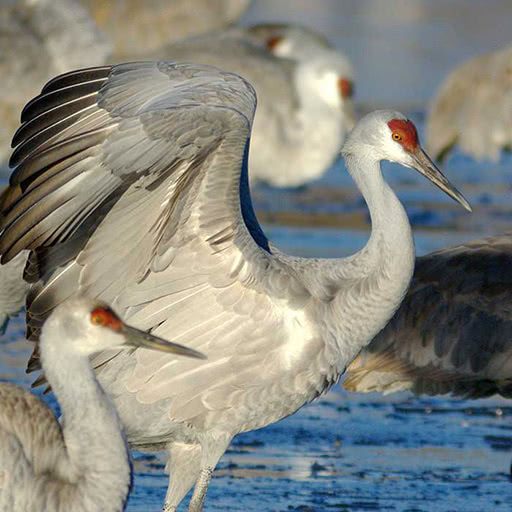
Sandhill cranes have big feet! These specialized feet help the bird remain stable while wading through wetlands.
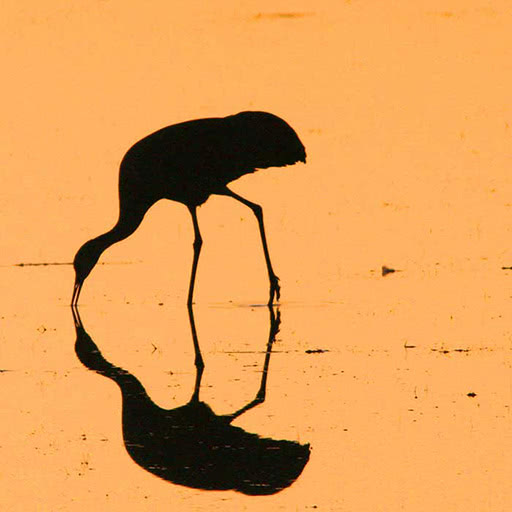
Sandhill cranes spend much of their time foraging in grasslands and marshes. They use their long probing beaks to extract food from their muddy environment.
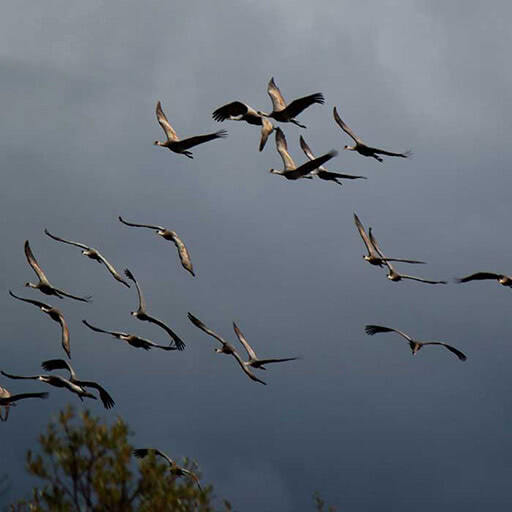
Sandhill cranes use their long windpipes to produce long trumpeting sounds to communicate with one another.
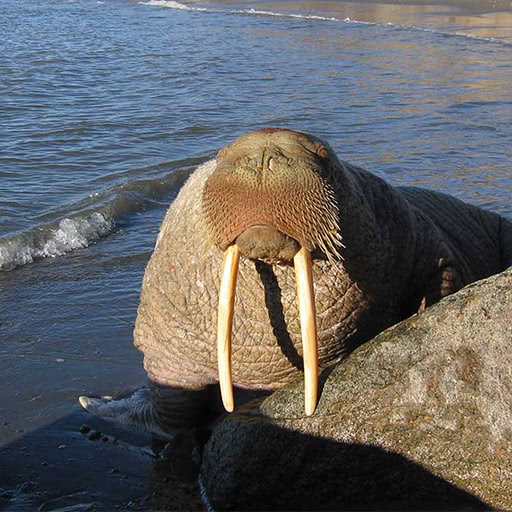
Walruses have big tusks for defending their territory, helping them get up on the ice, and they even help males attract the females.
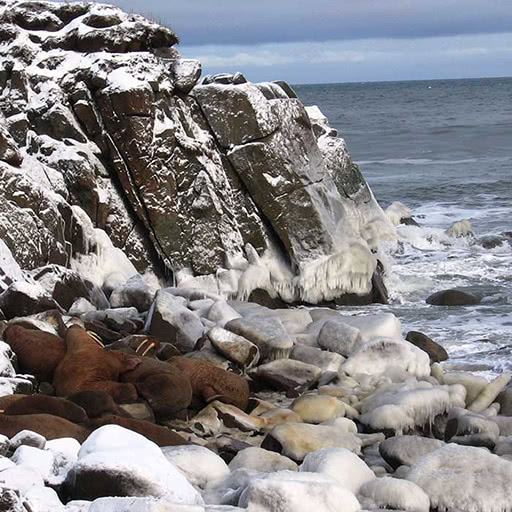
Walruses have a thick layer of blubber that keeps them warm in cold water.
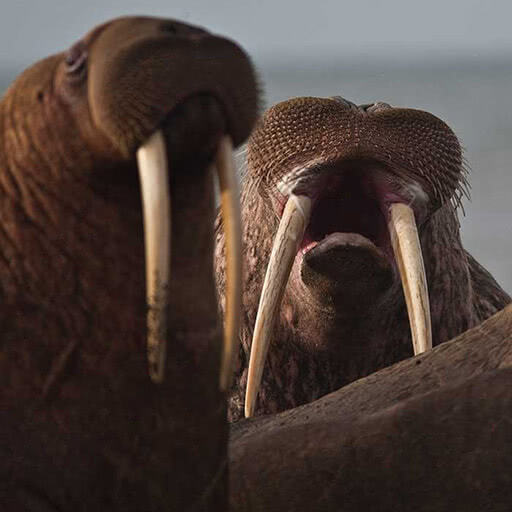
Walruses eat clams, snails, crabs, and other creatures. Some scientists say the walruses' mouth is a special shape to help them suck the fleshy pieces out of clam shells.
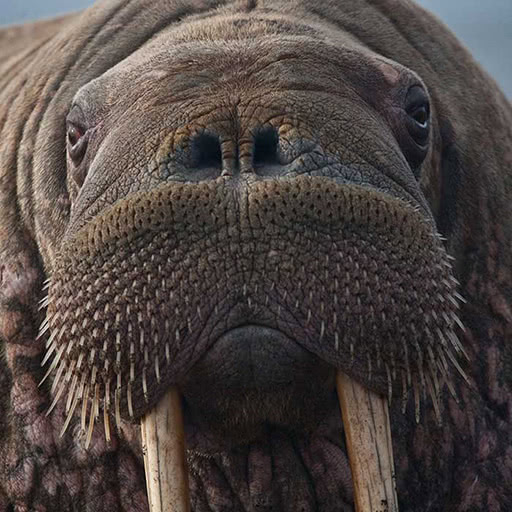
Walruses are able to use their highly sensitive whiskers to detect their favorite meals (usually shellfish) that are found at the bottom of the ocean floor.
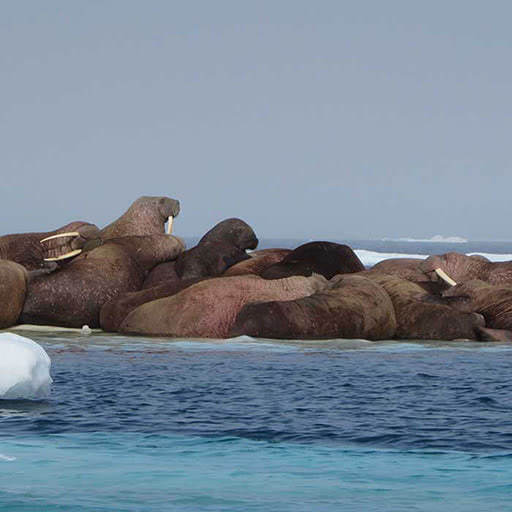
While diving underwater, the walrus can slow down its own heart rate so that they don't use as much oxygen.
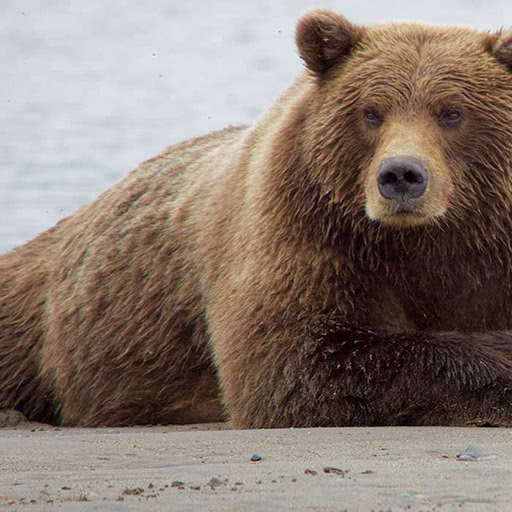
During hibernation, the bear's body temperature, heart rate and metabolic rate (its ability to process food) slows down drastically.
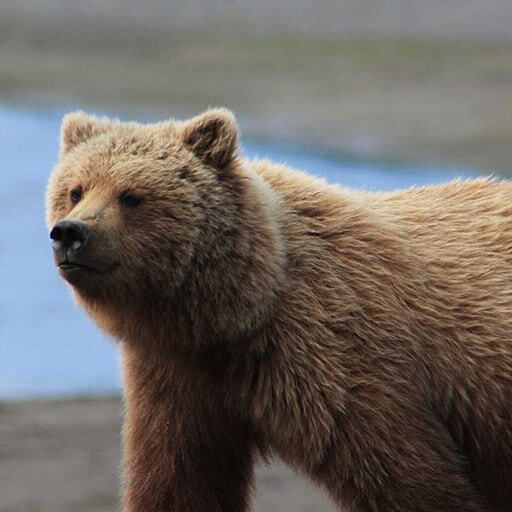
Brown bears have a strong sense of smell and can detect animals up to 10 miles away.
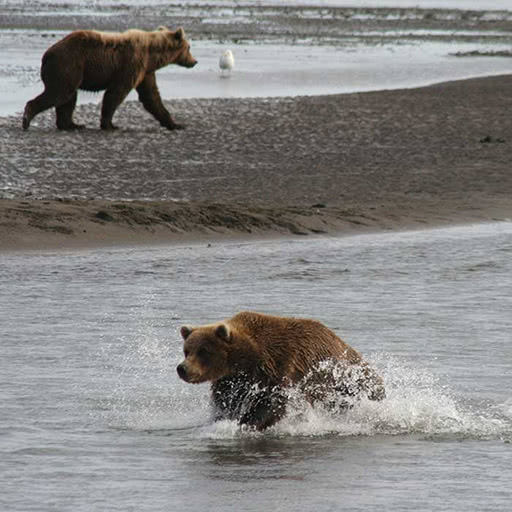
Brown bears can sprint up to 30 mph to capture prey, like moose, muskoxen, or caribou.

Bears gain about 3 pounds of weight each day in preparation for hibernation. They eat fish and berries in the fall to put on fat.
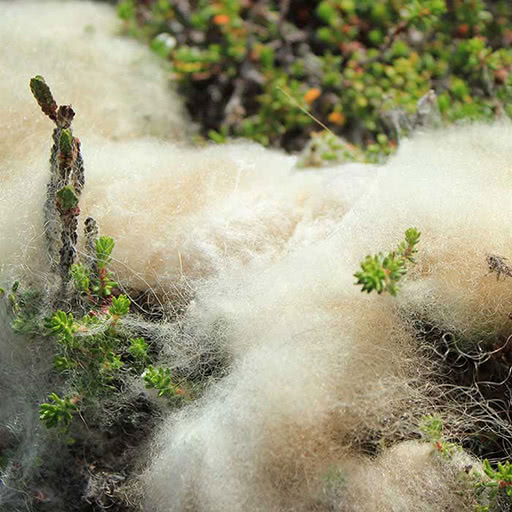
Muskoxen fur consists of two layers: A long outer layer of thick guard hair and a woolly undercoat of underfur called qiviut. To keep cool during the summer months, muskoxen shed their underfur. It's like taking off a sweater!
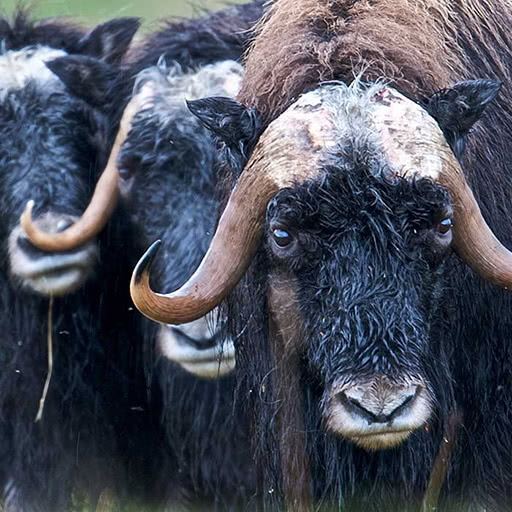
Male muskoxen have helmet-like horns, called a boss, that are 4 inches thick and a skull that is an additional 3 inches. During the fall, male muskoxen challenge each other to establish dominance. Their specially adapted skulls protect them from hard blows to the head.
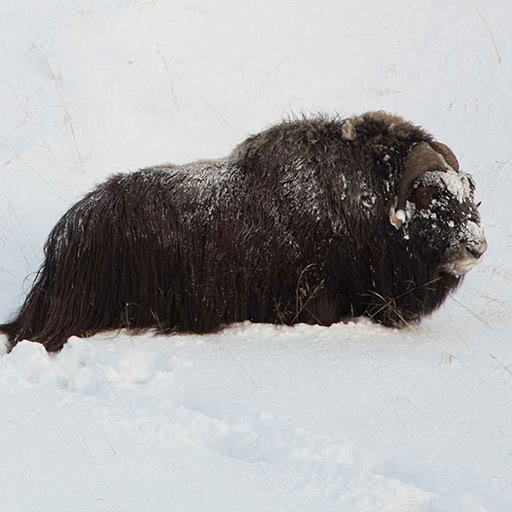
Muskoxen have an amazing four chambered stomach that allows them to survive the winter on little more than lichen.
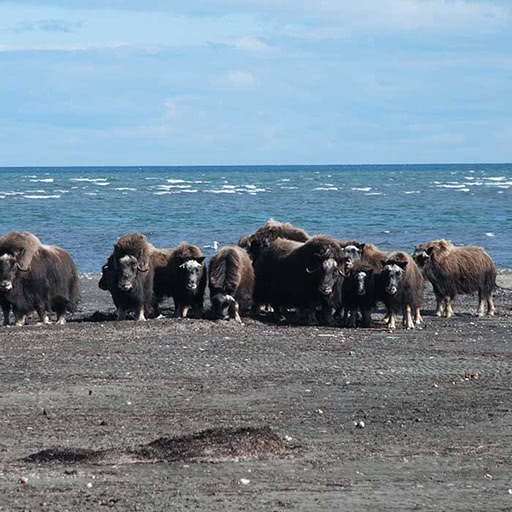
To defend themselves against predators, muskoxen group together, placing the calves on the inside of the defensive circle, and face the threat. Occasionally, a muskox will charge the enemy.
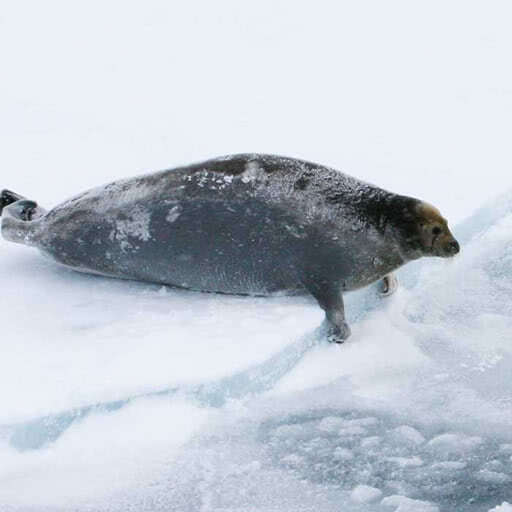
Bearded seals have sleek torpedo-shaped bodies and the absence of an elongated neck, which allows them to navigate an environment that is a mix of ice, waves and rock.
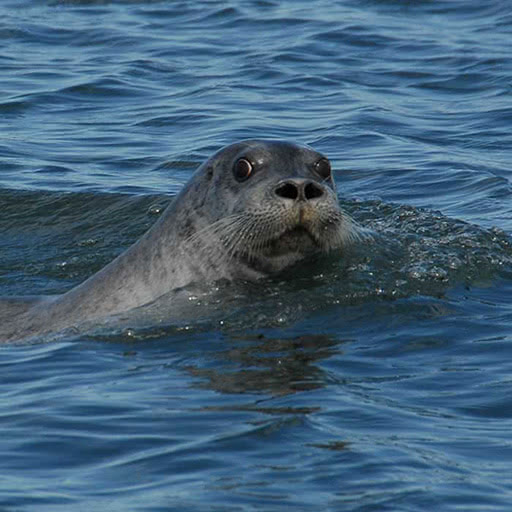
Male bearded seals select a territory and sing to attract females and warn off competition. The songs of these underwater crooners can be heard up to 13 miles away.
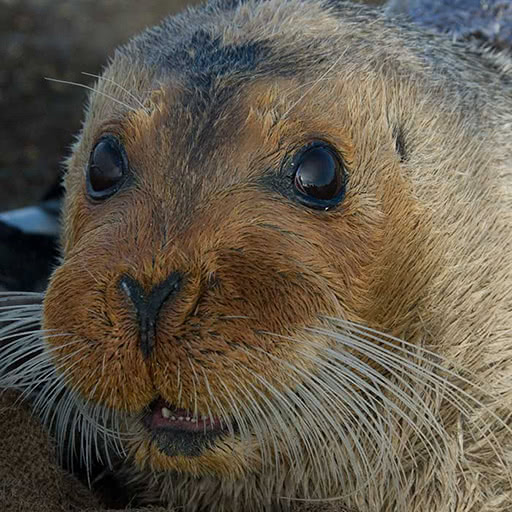
Bearded seals have small slits for nostrils and possess the ability to close them when underwater.
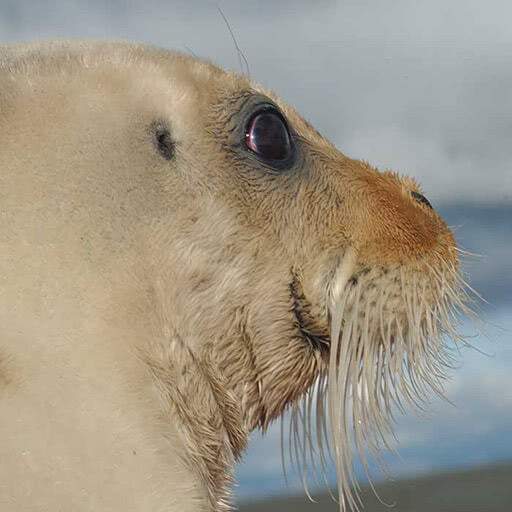
Bearded seals have sensitive whiskers which allow them to easily find food, especially in their dark underwater environment.
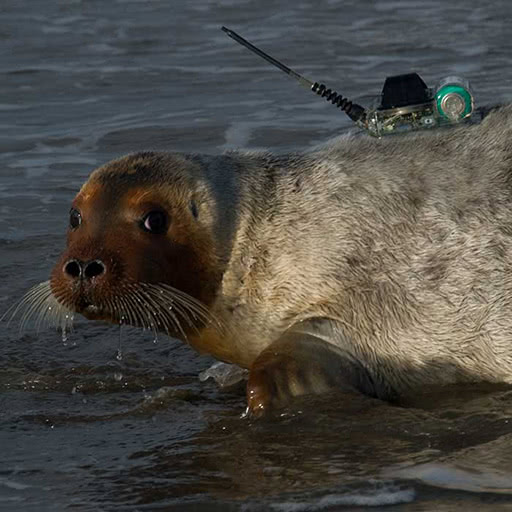
Bearded seals use their front flippers the way we use a steering wheel. Their front flippers help them navigate and maneuver the icy waters.
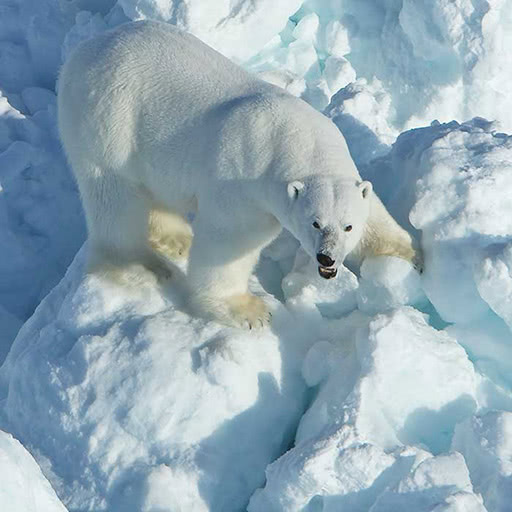
A polar bear's fur is actually see-through. Each strand is colorless and hollow. When sunlight reaches the polar bear, the light is reflected and scattered giving off the appearance of white fur.
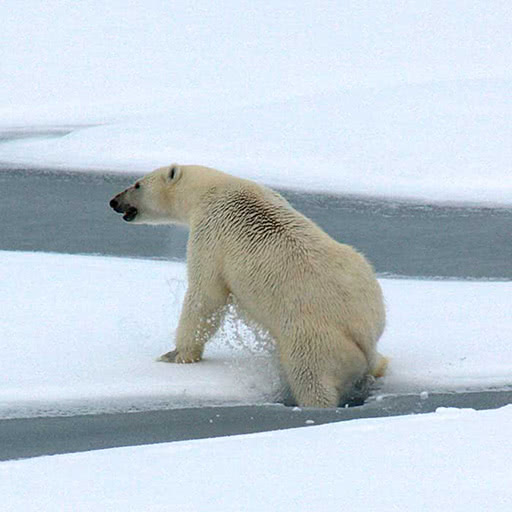
A polar bear's skin is black. It's nose is the only part of the skin that is easily visible.
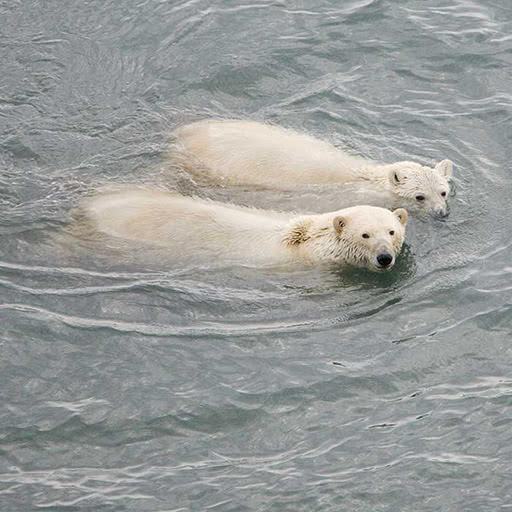
Polar bears have webbed feet which allow them to be efficient swimmers. They can swim up to six miles an hour and for long distances as they get from ice floe to ice floe.
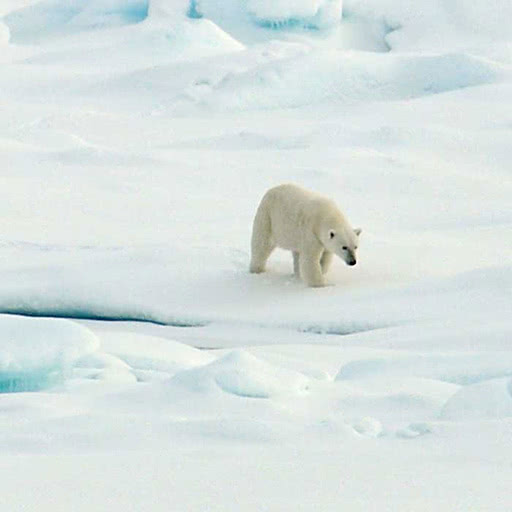
Polar bears are suited to live in icy climates. In fact, they must avoid overheating. They do so by being leisurely walkers.
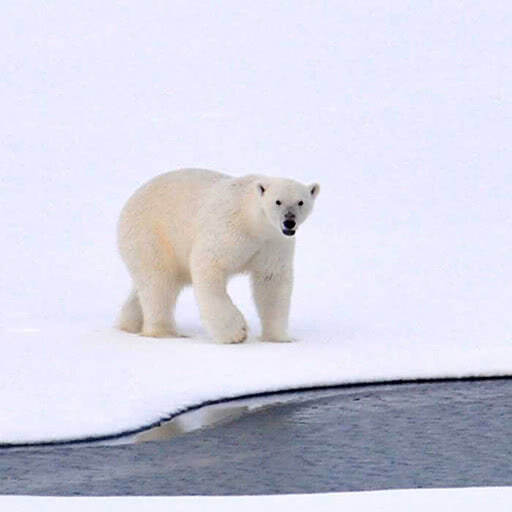
The bottom of a polar bear's foot is covered with small, soft bumps called papillae. It helps them grip the ice and keeps them from slipping.
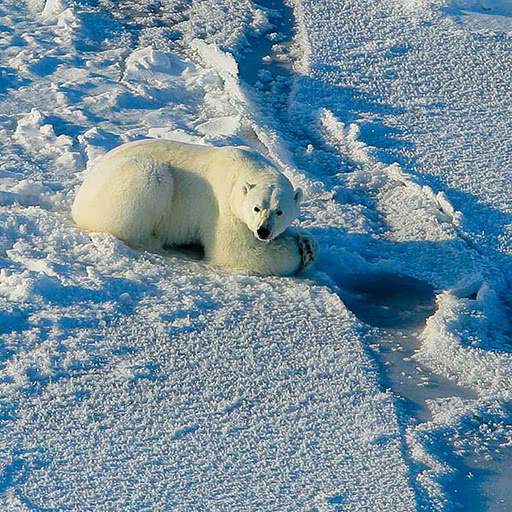
A polar bear's diet consists primarily of seals. Their favorite food is the blubber and skin. They can eat 100 pounds of blubber in a single sitting.
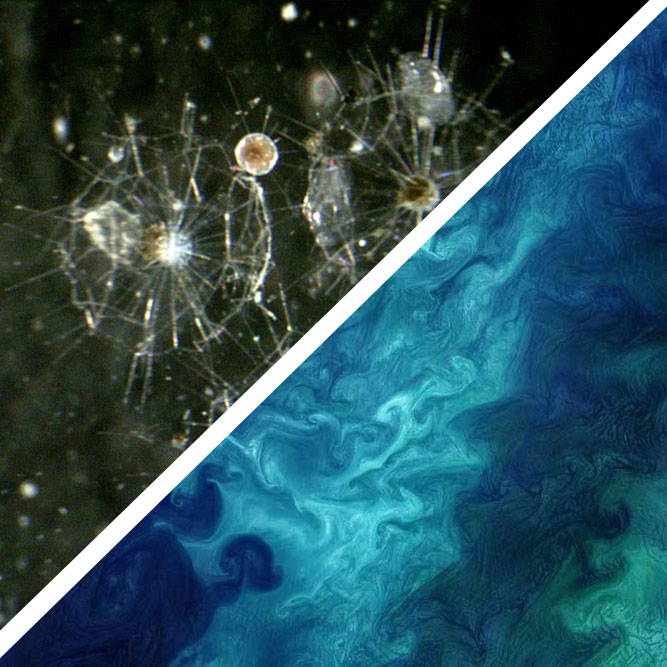
Phytoplankton make their own food through photosynthesis. Can you guess why you'd find phytoplankton closer to the surface of the ocean? Sunlight!
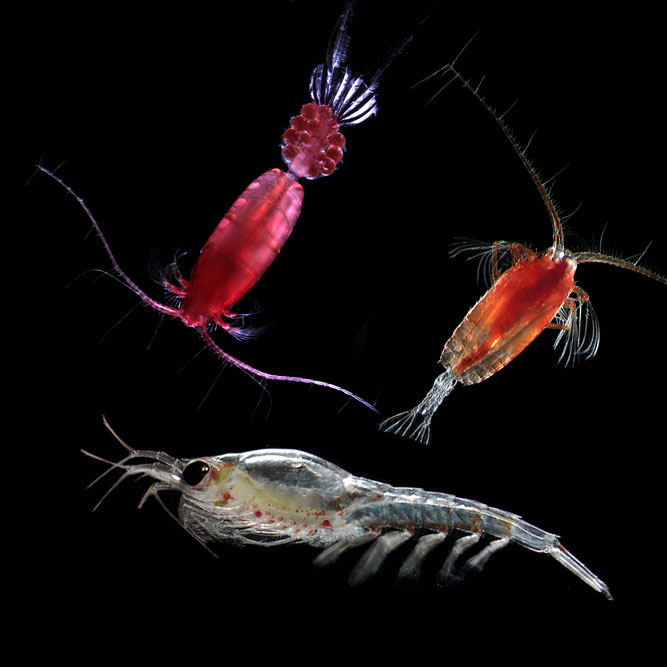
Zooplankton move up and down through the water layers of the ocean. They move into deeper waters, where there's less light, to avoid detection by predators.
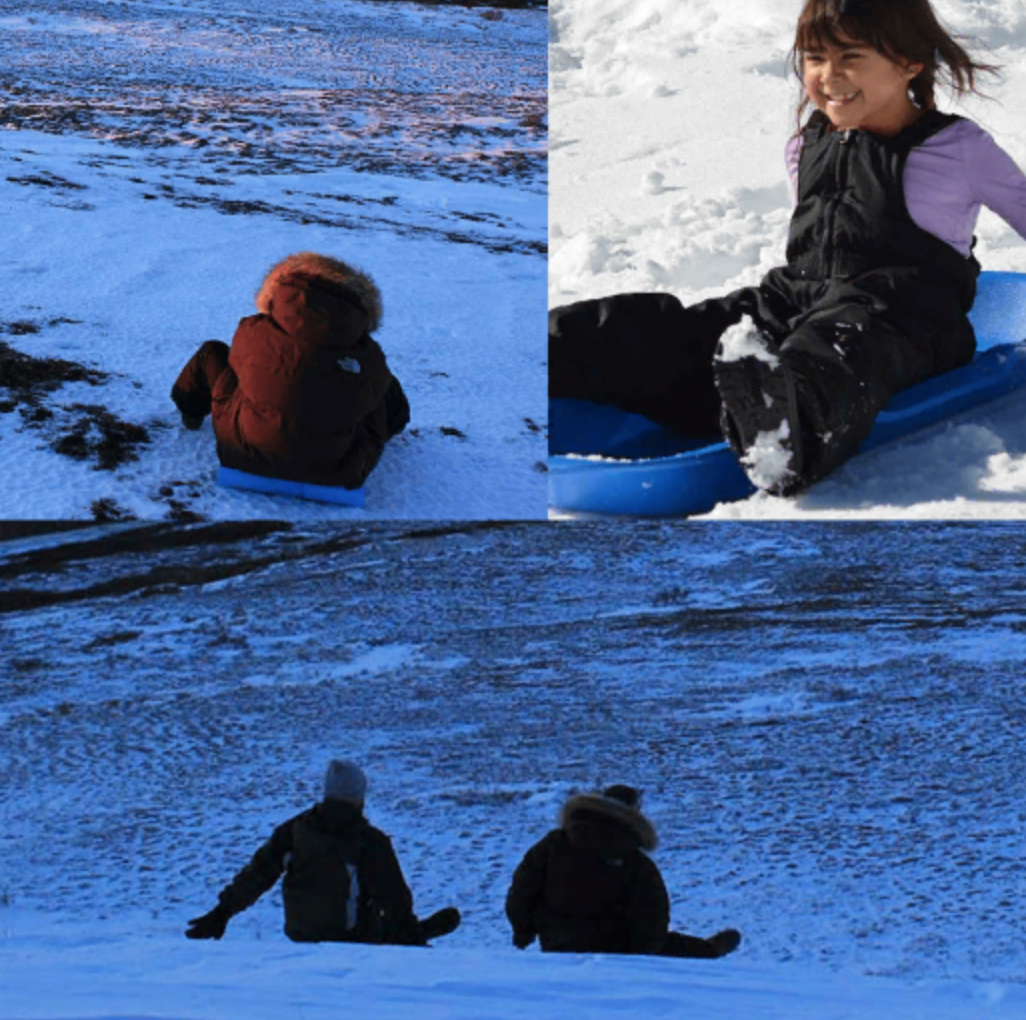
Sledding is a popular pastime for kids and adults alike, especially in early spring, when there is plenty of snow and the days are longer. The thrill of sledding down a snowy hill fills a day with joy and laughter.
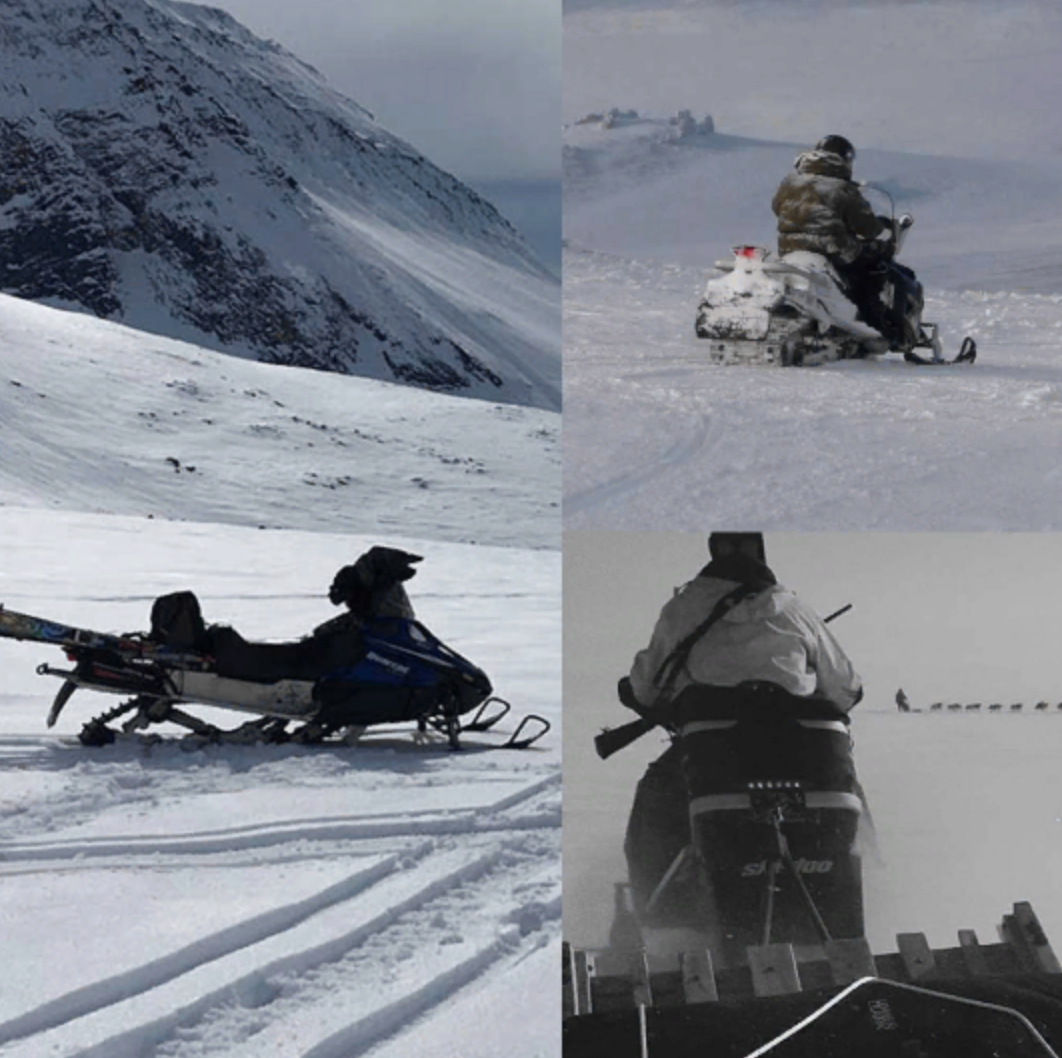
Winters are long and snow is abundant! Snowmobiling take you places you would otherwise not reach: down frozen rivers, over the sea ice, or across the vast snow-covered tundra. They are also used to travel between villages because there are no roads to drive on. Snowmobiles are vital for hunters, trappers, and outdoor adventurers.
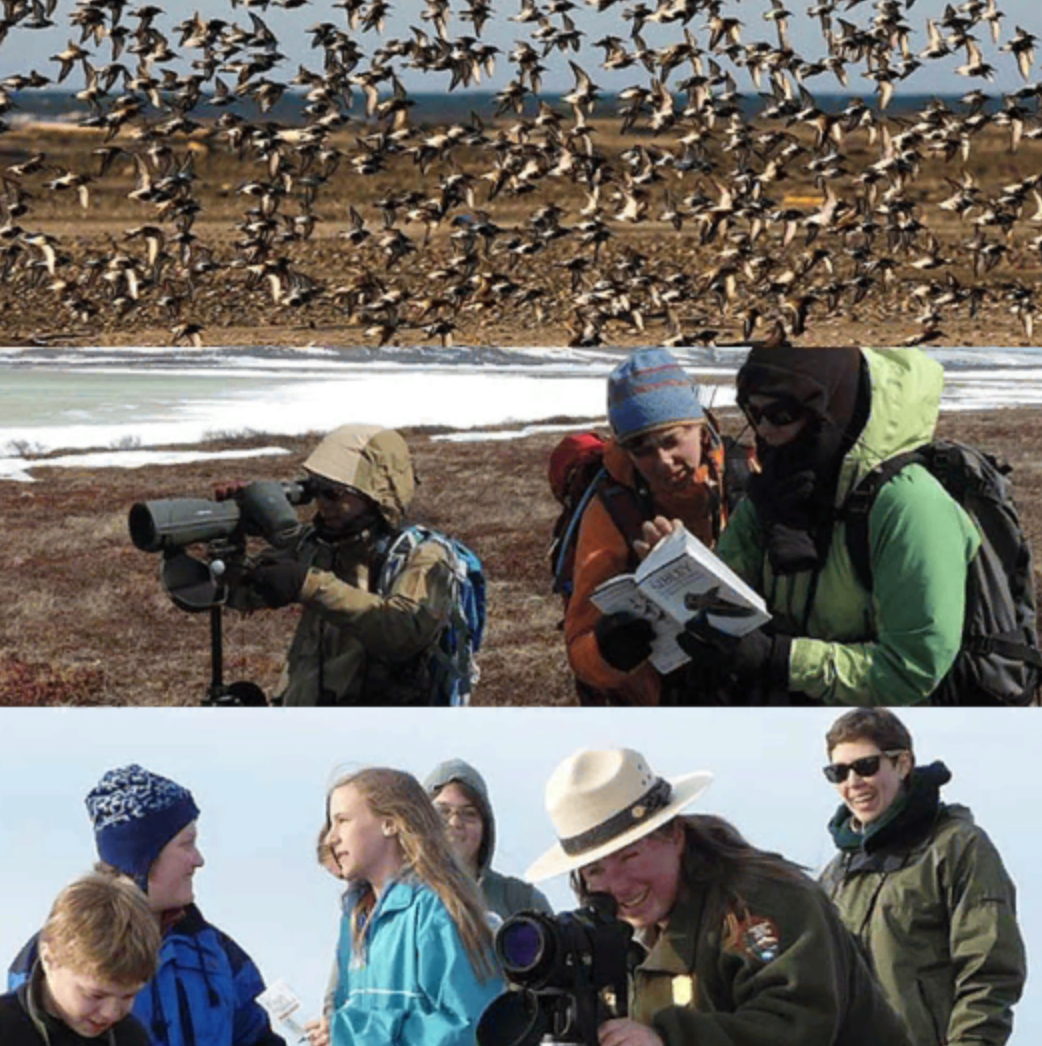
Look to the sky! Bering Land Bridge is part of a major migratory flyway that brings over 170 species of birds to the area. Locals and visitors enjoy this magnificent migration. There are opportunities to view birds found here and unlikely anywhere else in the continent.
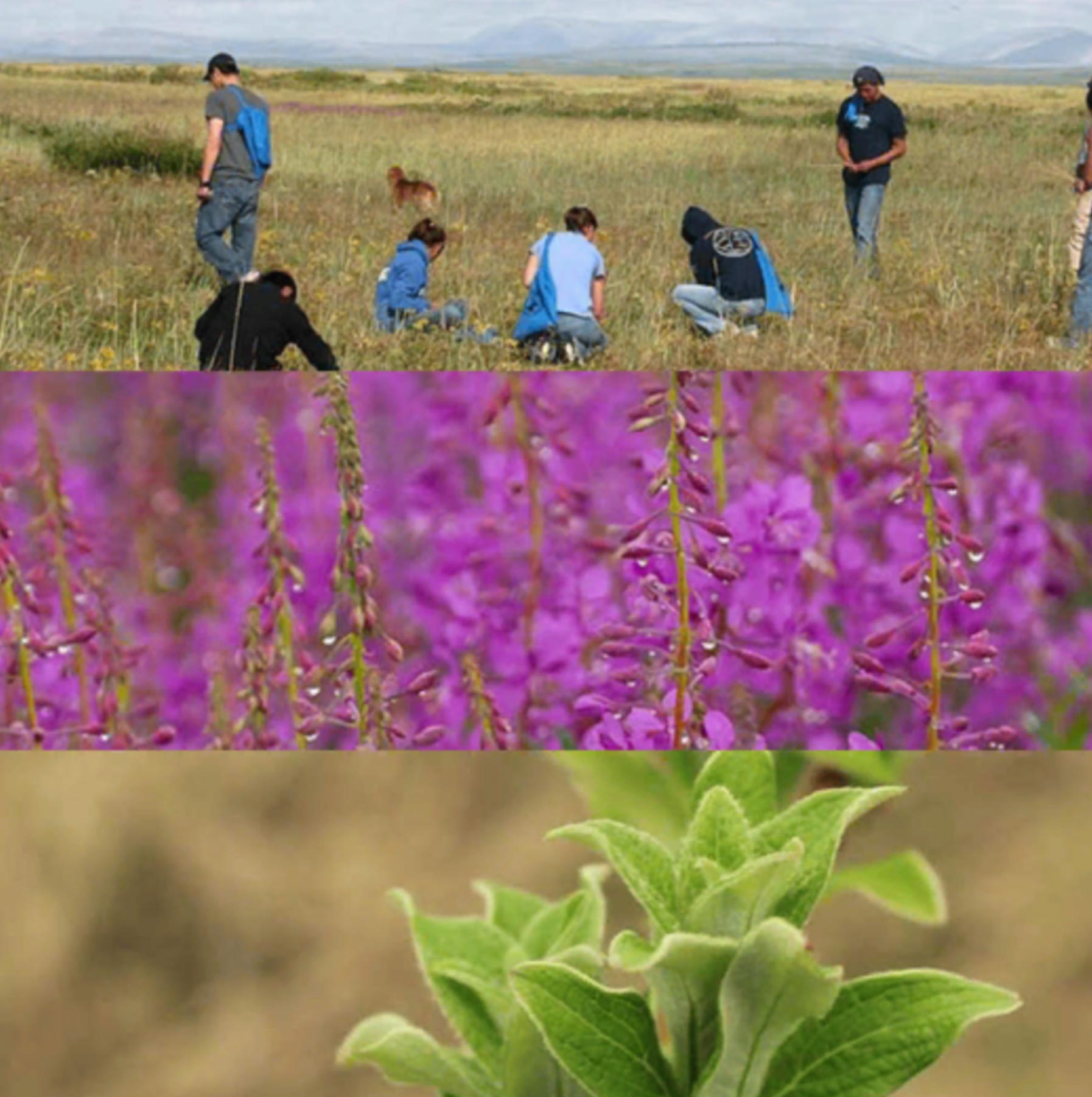
Sea lovage, Eskimo potato, stinkweed and fireweed are some of the common plants gathered by local people and used as food and traditional medicine. Collecting greens keeps people healthy and has been a source of food for thousands of years.

Fishing takes on many forms. You can you use a rod and reel, a seine, or a gillnet. Seining and gillnetting use nets to catch many fish at once. Ice fishing with a hook on a jig, is done in the winter through holes in frozen rivers, lakes and the sea. Usually, fish are preserved by smoking, freezing and drying them outside on fish racks.

Hiking and camping in and around Bering Land Bridge comes with an added twist, there are no campgrounds or trails to follow. Hikers and campers enjoy the opportunity for solitude and freedom afforded by remote and vast wild lands.
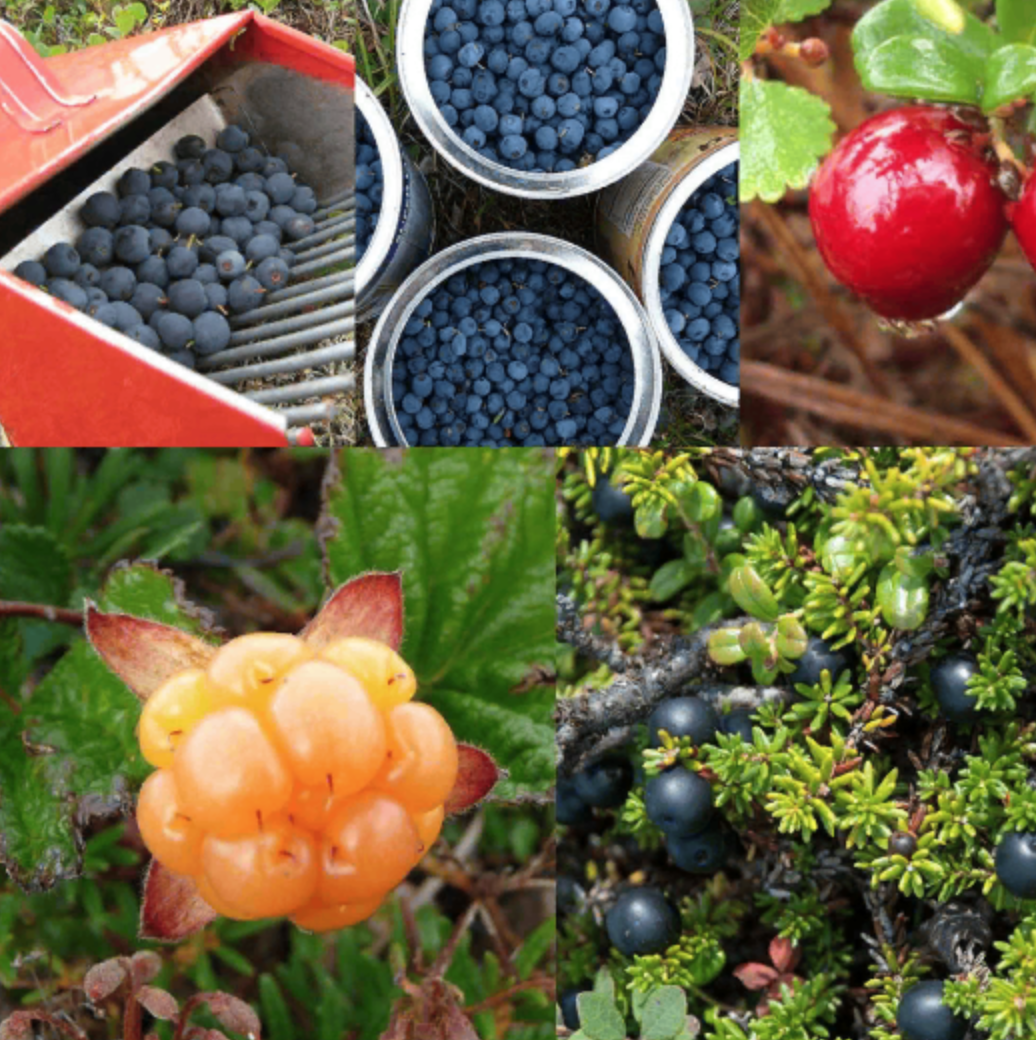
Crowberries, blueberries, cranberries and salmonberries! When berries ripen in late summer, many families head to the tundra to pick these delicious fruits. Berries are part of traditional dishes prepared by local people and are packed with vitamins and nutrients.

Hunting wild game celebrates the bounty of the land. Many hunters start at a young age and are taught by family members. Hunting traditions, safety, and hunter ethics are also passed down from generation to generation. These practices are part of a healthy lifestyle.